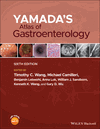Interventional radiology
Summary
This chapter offers diverse images that provide an overview of interventional radiology and aims to provide a synopsis through pictures and illustrations rather than through text. Vascular and interventional radiology utilize minimally invasive, image-guided, targeted procedures to diagnose and treat diseases in nearly every organ system. Interventional radiology procedures frequently offer less risk, less pain, and less recovery time compared to open surgery. Image-guided therapies for primary and secondary liver cancer include intraarterial therapies and percutaneous ablative techniques. Vascular interventions of the gastrointestinal tract are directed at maintaining sufficient perfusion of the abdominal viscera, stopping bleeding, and equilibrating venous pressure. There are innumerable strategies employed by interventionalists for the treatment and diagnosis of diseases affecting the biliary tract, including percutaneous transhepatic cholangiography, biliary drain placement, biliary stent placement, and cholecystostomy tube placement.



